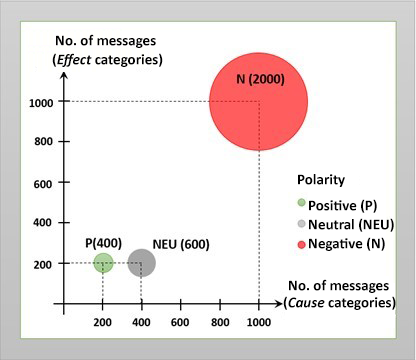EDITOR’S NOTE: This is a guest post by Leopoldo Martínez D., a researcher, consultant on social media corporate intelligence and lecturer at UCV and IESA (Venezuela), and it was originally published on his blog (in Spanish).
1. Introduction
In this previous post, I suggested that conversations taking place in virtual communities fostered by a digital marketing plan generate feedback that is useful for assessing and monitoring a digital’s marketing strategy’s performance.
This feedback could generate a huge amount of valuable data (Big Data) which enables the creation of a knowledge base for the topic being talked about, who is participating, who is having the greatest impact on brand image, products, people, or organizations.
This knowledge base can also be fed by discussions arising from unexpected events which are not part of the communication plan but deal with the virtual community’s topics of interest.
To specifically assess the conversation’s impact, it is necessary to pay attention (beyond listening) to what is being said through metrics (qualitative and quantitative) that reflect the online community’s perception on brands, products, people, or organizations. After all, this perception is a way to measure an online reputation.
With this need in mind, the purpose of this post is to show how to use the active listening of conversations in social networks to evaluate your online reputation.
2. Assessing online reputation in an ocean of information
In a digital marketing strategy, online reputation management is carried out through active listening. This process consists of four phases:
- Monitoring: listening to what is said through searching and extracting data from conversations using key words or phrases. These conversations can be from the past or in real-time.
- Filtering: filtering conversations using criteria that extract what’s meaningful (comments, praises, complaints, etc.).
- Analysis: observing and intelligently analyzing conversation data by studying the sentiment of the interactions (positive, neutral, or negative mentions).
- Action: cleaning up the online reputation or improving it once the conversation’s topic and sentiment are understood, if necessary.
3. Sentiment as an indicator of online reputation
Humans are able to immediately understand the sentiment of a message or conversation. But when we are talking about hundreds of thousands of messages, we need technology to automate this task and, at the same time, emulate human intelligence to pick up on the underlying sentiment.
Several techniques can be used for this type of emulation; the best known are sentiment analysis and opinion mining. This analysis infers a message’s sentiment through its polarity (positive, neutral, or negative), a measure of one’s perception of a subject.
In addition, a message’s sentiment usually reflects possible causes and effects of a situation or topic discussed in a conversation. This aspect is crucial for assessing online reputation, as it may reveal key details about potential problems (causes) and consequences (effects) around the image of a brand, product, person or organization.
For this reason, text classification is also required to evaluate online reputation. Through a specific computer application, text classification puts each text into a category (economy, finance, society, police, security, entertainment, food, etc.). After identifying the category, the human professional can determine if it should collect messages of cause or effect, according to what the situation calls for.
The combination of polarities and categories (causes and effects) can be represented graphically to show whether the perception on a subject is favorable for an online reputation. Figure 1 shows a hypothetical example of 3,000 messages analyzed on any given day.

Figure 1. Polarity of messages (causes and effects)
In Figure 1, there are 2,000 messages with negative polarity (N). 1,000 of them belong to cause categories and the other 1,000 to effect categories. 600 messages have neutral polarity (NEU), consisting of 400 cause and 200 effect categories, whereas 200 of the 400 messages with positive polarity (P) belong to the cause categories and the other 200 to the effect ones.
The calculations 2,000/3,000 = 66.67%, 600/3,000 = 20%, and 400/3,000 = 13.33% can be taken as measures of the perception of the hypothetical situation, and hence as measures of online reputation. Also, the axes Cause categories and Effect categories provide intensities of the possible causes and effects.
In my next post, I will present this approach to evaluating online reputation in a real-life situation related to tourism.
Leopoldo Martínez D.

